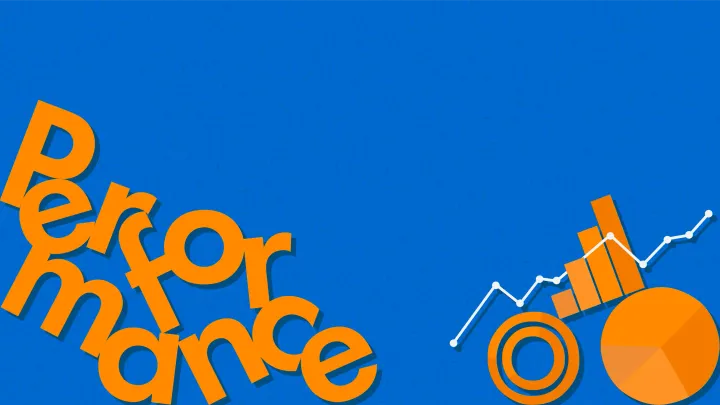Implementing continuous performance management with success

Employee appraisals, performance reviews, end of the year appraisal. Whatever you call it, the concept is pretty much the same, but not when it comes to continuous performance management.
One thing for sure is that traditional performance reviews aren’t working – at Charlie, we've know it for a while, and that's why we decide to completely change the way we do feedback.
That’s a particularly important fact for small businesses and startups, so let's find out what it means and how you could benefit from it.
What is continuous performance management?
It’s a process designed to evaluate and measure an employee’s performance regularly, instead of only doing it once per year. The feedback is given on a weekly, biweekly or monthly basis, and sometimes even in real time.
With continuous performance management, managers are able to have a global view of their employee performance, instead of getting snapshots of how they're doing.
It's a great way to build a relationship between employee and manager, where they feel comfortable sharing feedback about each other, without creating conflicts. It also creates better opportunities to identify room for improvement, highlight areas of success, and generally checking on how things are going on a regular basis.
Here's a few ways continous performance management is done at Charlie for example:
- Weekly one-to-ones meetings between manager and employee where they can catch up on on-going work or discuss any issues
- Weekly goal settings to get a sense of purpose and keep team members accountable
- Long-term objectives linked to business and personal goals to contribute to the overall business performance
- Real-time feedback on projects if something has gone amiss or even if it's gone well
- Constant communication so that no areas are left in the dark and questions have been asked before starting a project
Why is continuous performance management important?
Continous performance management is essential so you don't lose sight of what matters for your business goals.
It helps you keep employees regularly on track, and can set a definite process to make sure they're working towards business goals, matching key results with their individual performance.
This is also a great occasion to touchpoint and make sure your team member is doing well in their role – it works much better than a yearly performance review, and is vital for your team.
For small businesses and startups like us, continuous performance management was a turning point. It really helped our team members and our management step up when it came to driving for high-performance.
Want to find out more about performance management? Check out our best performance management software guide.
Traditional performance management vs continuous performance management
Running annual appraisals is a slow-moving method for checking up on your employees. It creates huge swathes of time where feedback and self-reflection are not a priority.
On one side, employees feel that the assessment of their entire year swings on a single conversation.
On the other side of the table, managers are as equally unhappy. Not only does the system create a huge backlog of work, but they need to have interview after interview with staff members who are perhaps already on edge, discussing projects that could have happened up to a year in the past.
With continuous performance management, the clue is in the name. Instead of the once-per-year annual review, employees have regular check-ins and touch points with their managers. Feedback shouldn’t be a yearly event but rather an integral part of an employee’s day-to-day.
You could for example choose to use Charlie’s very own Reviews feature – automate your review cycles and drive real conversations between managers and team members.

Maybe you’d like to try it yourself. Sign up today for a free trial. No credit card required.
The 5 top benefits of continuous performance management
1. Feedback is 360 when it comes to continuous performance management
Continuous performance management isn’t reliant on top-down input from managers like the traditional appraisal system. After all - management is a continual process.
Instead, with 360 degree reviews, feedback is encouraged from every direction. This includes sideways - from peers and colleagues - as well as upwards, where team members give feedback on their boss’s performance.
The major advantage of this approach is that it encourages a much fuller picture of everyone’s performance.
High-level managers, particularly CEOs, can often have a very ‘gappy’ impression of who is doing what in their company - for the very simple reason that they can’t see everything.
You can even choose to involve other team members in the process. Find out more through our 360 reviews template and our best 360 feedback tools guide.
2. Continuous performance management saves time and effort for everyone
As you might imagine, compressing a year’s worth of evaluation and feedback into a single interaction is an absolute nightmare.
That’s where continuous performance management comes in to save the day. By doing reviews more regularly, it’s more likely that both employees and managers will be able to focus on what has been done in the past few months.
The reflection on the work will go into more detail and not just include a general overview of what it’s been like over the year – it will also make it a fairer process.
On top of this, it will be more straightforward as both managers and employees won’t have to keep tons of documentation by their side. What they worked on will be fresh on their mind.
3. Continuous performance management helps tackle underperformance issues
When you get a new hire, it’s usually through the probation period that you can decide whether this person is up to the task.
However, probation periods can be short – what if you missed something? Would you really wait a year to address it?
It’s the same when it comes to exceptional circumstances. A personal event might affect the way your team member is performing. If they don’t take the initiative to talk to you about it and if you don’t have regular catch-ups, it’s likely you won’t be able to understand what’s going on and therefore make the wrong assumptions.
Continuous performance management is a handy way of checking whether team members need support or giving them feedback on what they could improve.
That way, you can address issues before they become bad habits and agree on a course of action to address underperformance.
To find out more about how to tackle underperformance, check out our guide on performance improvement plans (along with a free template).
4. Continuous performance management makes employee development a priority
Traditional performance reviews have often included a token aspect of employee development - but it has regularly overlooked just how powerful a tool it can be, for both the employee and the employer.
Here’s the trick:
If you can identify what your employee wants to achieve in their professional lives, then you can agree together on how they can achieve that within the scopes of the business.
Help team members invest themselves in their job, and you’ll see them approach everything they do with a renewed sense of purpose. The happier your team members are at work, the more likely employee engagement will increase.
From an HR point of view, it also guarantees retention rates: people will stay longer at your company because they will see their careers evolve and their skills improve.
Finally, you'll be able to attract the best people by having a workforce that's been there for a long time and by advertising career development.
Get all of it done and reap the benefits together – you can even put together personal development plans to help your team members progress.
5. Continuous performance management makes development second nature
When you really break it down, the reason that employee reviews exist is to try and improve your team’s performance. Traditionally, that has meant managers telling an employee where they should be improving.
But the end goal is really to take the managers out of the equation altogether - for employees to be self-reflective about their performance, and identify their strengths and weaknesses independently.
Achieve this, and the hard work is already done. If employees are taking ownership of their performance at work, they will become better by themselves.
With Charlie, it's also up to you to decide how often these conversations should happen. We do this every four months to allow enough time and material to reflect on, but that’s really up to what you think is best.
What’s more - we allow you to fully automate your review process, so you can ensure that meaningful conversations take place across your company, effortlessly, so perhaps it's time to have a look at our performance review software.
And if you want to find out more about what is performance management in general, here's a few resources we put together:



